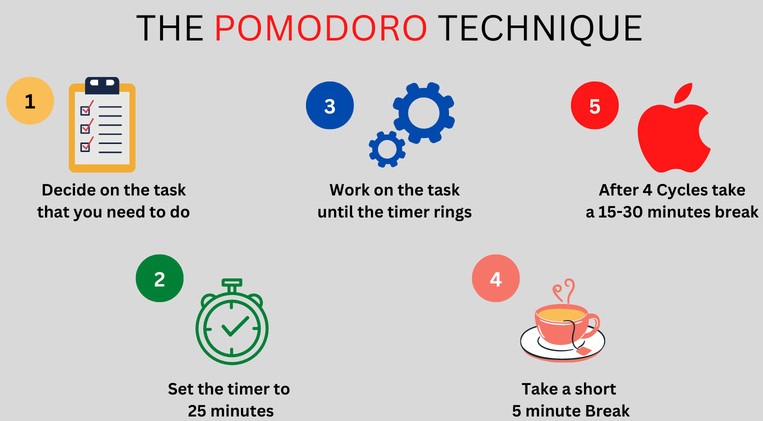In today’s hectic work environment, prioritizing rest during working hours may seem counterintuitive. Yet, research emphasizes its critical role in sustaining productivity, creativity, and overall well-being. This guide offers practical strategies for integrating essential moments of rest into your daily routine.
Table of Contents
Understanding the Importance of Rest During Working Hours.
In our culture of hustle and productivity, the idea of resting during working hours is often met with skepticism. However, numerous studies have demonstrated the detrimental effects of prolonged periods of work without breaks. Not only does overworking lead to burnout and decreased job satisfaction, but it also impairs cognitive function, diminishes creativity, and increases the risk of physical and mental health issues.
Taking regular breaks during the workday allows your brain to recharge and reset, enabling you to return to tasks with renewed focus, clarity, and energy. Additionally, restorative practices such as deep breathing exercises, physical movement, and mindfulness meditation have been shown to reduce stress, improve mood, enhance cognitive function, and boost overall well-being.
Strategies for Incorporating Rest During Working Hours.
1. The Pomodoro Technique:

The Pomodoro Technique is a time management method developed by Francesco Cirillo in the late 1980s. It’s designed to help individuals maintain focus, manage distractions, and improve productivity by breaking work into short, structured intervals called “Pomodoro’s.”
Here’s a more detailed explanation of how the Pomodoro Technique works:
- Setting a Timer: To start using the Pomodoro Technique, you set a timer for a specific period, typically 25 minutes, which is known as a “pomodoro.” The timer serves as a visual and auditory cue, signaling the start of a focused work session.
- Focused Work Session: During the pomodoro interval, you work on a single task with full concentration, avoiding distractions and interruptions. The goal is to immerse yourself completely in the task at hand and make progress towards your objectives.
- Short Break: Once the 25-minute pomodoro session is complete, you take a short break, typically lasting around 5 minutes. This break allows your brain to rest and recharge, preventing mental fatigue and maintaining productivity.
- Repeat the Cycle: After the short break, you start another pomodoro session and repeat the cycle of focused work followed by a brief rest period. Each pomodoro session represents a unit of focused effort, and the breaks help you stay refreshed and alert throughout the workday.
- Longer Breaks: After completing a certain number of Pomodoro’s (e.g., four sessions), you can take a longer break, typically lasting 15-30 minutes. These longer breaks provide opportunities for relaxation, reflection, and rejuvenation before returning to work.
The key principle behind the Pomodoro Technique is the concept of “timeboxing,” which involves allocating specific amounts of time to tasks and committing to focused work during those intervals. By breaking your workday into manageable segments and alternating periods of intense concentration with brief moments of rest, you can maintain a high level of productivity while avoiding burnout and mental fatigue.
Additionally, the Pomodoro Technique encourages individuals to track their work sessions and analyze their productivity patterns over time. This self-monitoring aspect helps identify areas for improvement, optimize workflow, and enhance time management skills.
Overall, the Pomodoro Technique provides a structured framework for managing time effectively, boosting productivity, and maintaining a healthy work-life balance. It’s a simple yet powerful tool that can be adapted to fit individual preferences and work styles, making it suitable for a wide range of professionals and tasks.
For further insights and tips on implementing the Pomodoro Technique, check out this comprehensive guide from The Pomodoro Technique Guide by Todoist.
2. Mindful Breathing:

The practice of mindful breathing, also known as deep breathing exercises or mindfulness meditation, is a simple yet powerful technique for reducing stress and promoting relaxation. Here’s a more detailed explanation of how mindful breathing works and its benefits:
- Setting Aside Time: Taking regular breaks throughout the day to practice mindful breathing involves setting aside dedicated moments for relaxation and self-care. These breaks can be as short as a few minutes or longer if time allows. Ideally, aim to practice mindful breathing multiple times a day to reap its full benefits.
- Creating a Calm Environment: Find a quiet and comfortable space where you can practice mindful breathing without distractions. Close your eyes to minimize visual stimuli and create a sense of internal focus. You can sit or lie down, whichever position feels most comfortable for you.
- Focusing on the Breath: Begin by focusing your attention on your breath. Notice the sensation of air flowing in and out of your nostrils or the rise and fall of your chest and abdomen. There’s no need to control your breath; simply observe it as it naturally occurs.
- Observing Sensations: As you continue to focus on your breath, pay attention to any sensations that arise in your body. Notice the feeling of expansion and contraction with each inhalation and exhalation. You may also become aware of subtle changes in your heartbeat, muscle tension, or temperature.
- Cultivating Awareness: The goal of mindful breathing is not to empty your mind of thoughts but to cultivate awareness of the present moment. When thoughts or distractions arise, simply acknowledge them without judgment and gently bring your attention back to your breath.
- Promoting Relaxation: Even just a few minutes of mindful breathing can have profound effects on your stress levels and overall well-being. By inducing a state of relaxation and calmness, mindful breathing helps reduce the production of stress hormones like cortisol and activates the body’s relaxation response.
- Long-Term Benefits: With regular practice, mindful breathing can lead to long-term benefits such as improved mood, better sleep quality, enhanced concentration, and increased resilience to stress. It can also serve as a valuable tool for managing anxiety, depression, and other mental health conditions.
3. Physical Movement:
The recommendation to incorporate physical movement into your workday aims to counteract the negative effects of prolonged sitting and sedentary behavior, which are common in desk-based jobs. Here’s a more detailed explanation of why physical movement is important and how it can be beneficial:
- Counteracting Sedentary Behavior: Many people spend a significant portion of their day sitting at a desk, which can lead to a host of health issues such as musculoskeletal discomfort, reduced circulation, and increased risk of chronic diseases like obesity, diabetes, and cardiovascular disease. Incorporating physical movement breaks into your workday helps break up prolonged periods of sitting and mitigates these negative effects.
- Increasing Blood Flow: Physical movement, even in short bursts, helps increase blood flow throughout the body, including to the brain. This enhanced circulation delivers oxygen and nutrients to tissues, improves cellular function, and removes metabolic waste products, resulting in better overall health and functioning.
- Alleviating Muscle Tension: Sitting in the same position for extended periods can lead to muscle stiffness and tension, particularly in the neck, shoulders, back, and hips. Engaging in physical movement, such as stretching or gentle exercises, helps alleviate muscle tightness, improve flexibility, and prevent musculoskeletal discomfort and pain.
- Boosting Energy Levels: Physical movement stimulates the release of endorphins, neurotransmitters that promote feelings of happiness and well-being. It also increases adrenaline and cortisol levels, which can boost energy and alertness. Taking short breaks to move your body can help combat feelings of lethargy and fatigue, leading to improved productivity and mood.
- Improving Mental Clarity: Physical activity has been shown to enhance cognitive function, including attention, memory, and problem-solving skills. By taking short movement breaks throughout the workday, you can refresh your mind, combat mental fatigue, and maintain focus and concentration on tasks.
- Enhancing Overall Well-being: Incorporating physical movement into your workday not only has physical benefits but also contributes to your overall well-being. Regular movement breaks can improve mood, reduce stress levels, and foster a sense of vitality and vitality, contributing to a healthier work-life balance.
Examples of physical movement activities you can incorporate into your workday include:
- Stretching exercises targeting key muscle groups like the neck, shoulders, back, and legs.
- Taking short walks around the office or outside during breaks.
- Doing desk-based workouts or yoga poses to improve flexibility and strength.
- Using active transportation options like walking or biking to commute to work.
By making physical movement a priority during your workday, you can reap numerous benefits for your physical and mental health, productivity, and overall well-being.
For further insights and tips on integrating physical movement into your workday, check out this informative article from the Mayo Clinic: Mayo Clinic – Office Exercise: Add More Activity to Your Workday
4. Nature Breaks:
The recommendation to take nature breaks during your workday emphasizes the importance of spending time outdoors and connecting with the natural environment for improved well-being. Here’s a more detailed explanation of the benefits of nature breaks and how they can positively impact your health:
- Reducing Stress: Spending time in natural environments has been shown to reduce levels of stress hormones such as cortisol. Nature has a calming effect on the nervous system, promoting relaxation and lowering feelings of tension and anxiety. Simply being surrounded by greenery and natural landscapes can help alleviate the physiological and psychological effects of stress.
- Improving Mood: Exposure to nature has been linked to improved mood and emotional well-being. Time spent outdoors can boost levels of serotonin, a neurotransmitter associated with feelings of happiness and contentment. Being in natural settings can lift your spirits, enhance your sense of vitality, and provide a welcome escape from the pressures of work and daily life.
- Enhancing Creativity: Nature has a profound effect on cognitive function, including creativity and problem-solving abilities. Research suggests that spending time in natural environments can stimulate divergent thinking, the ability to generate novel ideas and solutions. Nature breaks provide opportunities for mental rejuvenation and inspiration, fostering creativity and innovation in your work.
- Boosting Cognitive Function: Exposure to nature has been shown to enhance cognitive function, including attention, memory, and concentration. Time spent outdoors can improve mental clarity, sharpen focus, and increase productivity. Nature breaks offer a refreshing change of scenery and a chance to clear your mind, helping you return to work with renewed vigor and mental acuity.
- Promoting Physical Activity: Nature breaks often involve some form of physical activity, such as walking, hiking, or exploring outdoor spaces. Engaging in physical movement outdoors not only provides the benefits of exercise for your physical health but also enhances mood and reduces stress. Even a short walk in a nearby park or green space can invigorate your body and mind.
Examples of activities you can incorporate into your nature breaks include:
- Taking a walk in a nearby park or nature reserve
- Sitting under a tree and observing your surroundings
- Picnicking in a scenic outdoor location
- Gardening or tending to plants
- Participating in outdoor recreational activities like hiking, biking, or birdwatching
By prioritizing nature breaks during your workday, you can experience the numerous benefits of spending time outdoors, including stress reduction, mood enhancement, creativity stimulation, and improved cognitive function. Whether it’s a brief stroll during your lunch break or a longer excursion on weekends, connecting with nature can have profound effects on your overall well-being.
5. Social Interactions:

The recommendation to prioritize social interactions during breaks emphasizes the importance of connecting with others for well-being and productivity. Here’s a more detailed explanation of the benefits of social interactions and how they can positively impact your work environment:
- Alleviating Work-Related Stress: Social interactions provide a welcome respite from the pressures and demands of work. Engaging in conversations with colleagues or friends during breaks allows you to temporarily shift your focus away from work-related stressors and recharge both mentally and emotionally. Sharing laughter, stories, and experiences with others can help lighten your mood and put work challenges into perspective.
- Fostering Camaraderie and Connection: Social interactions contribute to a sense of camaraderie and belonging within the workplace. Building positive relationships with colleagues strengthens teamwork, collaboration, and mutual support. When you feel connected to your coworkers on a personal level, you’re more likely to enjoy your work environment, feel motivated to contribute, and experience greater job satisfaction.
- Enhancing Communication and Collaboration: Informal social interactions provide valuable opportunities for communication and collaboration. Casual conversations during breaks can lead to the exchange of ideas, insights, and perspectives that may not arise in formal meetings or emails. By fostering open dialogue and building trust with your colleagues, you create a supportive and collaborative work culture where everyone feels valued and heard.
- Boosting Morale and Productivity: Social interactions have been shown to boost morale and productivity in the workplace. When employees feel connected to their coworkers and enjoy positive relationships, they’re more likely to feel motivated, engaged, and invested in their work. Strong social bonds contribute to a sense of team spirit and shared purpose, driving collective efforts towards achieving common goals.
Examples of social interactions you can incorporate into your breaks include:
- Chatting with colleagues over coffee or during lunch breaks
- Participating in team-building activities or group outings
- Attending social events or networking gatherings organized by your workplace
- Joining virtual hangouts or online communities to connect with remote colleagues
By prioritizing meaningful social interactions during your breaks, you can enhance your overall well-being, strengthen relationships with colleagues, and create a more positive and supportive work environment.
Overcoming Common Obstacles to Rest.
- Guilt: Many individuals feel guilty or anxious about taking breaks during the workday, fearing they’ll be perceived as lazy or unproductive. It’s essential to recognize that rest is not a luxury but a necessity for maintaining optimal performance and well-being. Prioritize self-care without guilt and remind yourself that taking breaks is essential for long-term success.
- Time Constraints: If you’re struggling to find time for rest during your busy workday, consider scheduling breaks into your calendar or setting reminders to take regular pauses. Treat rest as a non-negotiable part of your daily routine, just like any other work-related task. Remember that investing in your well-being ultimately enhances your productivity and effectiveness in the long run.
- Workplace Culture: In some workplaces, there may be pressure to constantly be “on” and available, making it challenging to prioritize rest. However, advocating for a supportive workplace culture that values work-life balance and encourages employees to take breaks as needed is crucial. Openly communicate with your colleagues and supervisors about the importance of rest and encourage a culture of well-being and self-care.
Finally, in today’s fast-paced work environment, where the pressure to constantly be productive can feel overwhelming, the concept of taking breaks or Rest During Working Hours might seem counterintuitive. However, research has consistently shown that incorporating moments of rest into your workday is not only beneficial for your overall well-being but also essential for maintaining productivity, creativity, and long-term success. In this comprehensive guide, we’ll delve into the importance of rest during working hours and provide actionable strategies for integrating restorative practices into your daily routine. To further understand the significance of rest in fostering effective teamwork and collaboration, check out our blog on working together effectively.
FAQs:
How can I overcome feelings of guilt or anxiety about taking breaks during the workday?
Acknowledge the importance of rest for productivity and well-being, and establish boundaries to prioritize self-care without guilt, fostering open communication in the workplace.
How can I find time for rest during my busy workday when I have multiple tasks and deadlines to manage?
Prioritize rest amid busy schedules by scheduling breaks, using time management techniques like the Pomodoro Technique, delegating tasks, and communicating boundaries for a balanced work-life routine.
“Contact us today to prioritize your well-being and productivity!”
























